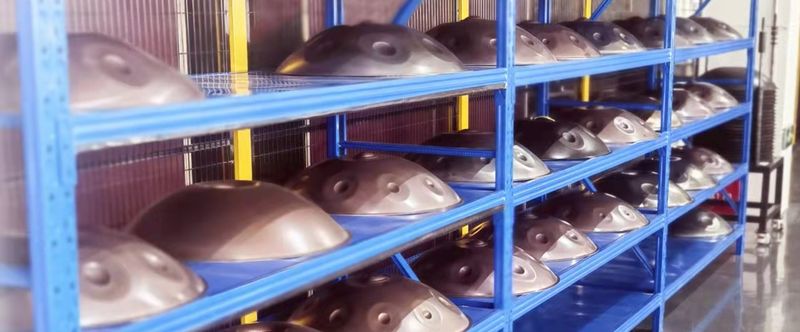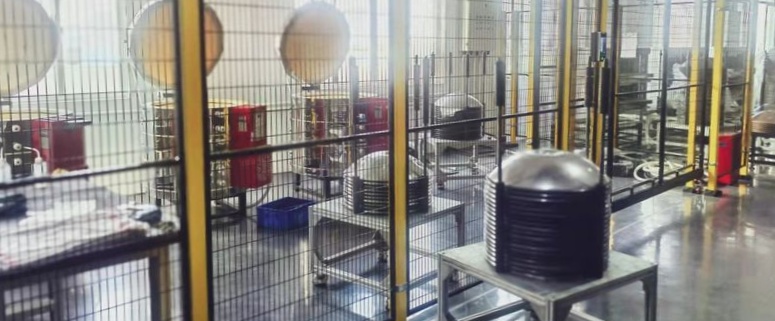
At the end of 2015 the “Handpan Virus” had caught me with full force. Fascinated by this instrument and its sounds, my exciting, inspiring and educational journey through the “Handpan Universe” began. Today, only a few years later, one can say that within the last 3 years only, no stone has remained on the other in this “Handpan Universe”. Some things have developed for the better in this universe, but unfortunately there were and are also very alarming developments to observe…

That these instruments have the potential to become a trend, a boom, was evident from the beginning. Beautiful, even ‘touching’ sounds, an appealing and fascinating shape and feel – and above all: FINALLY A MUSICAL INSTRUMENT THAT REALLY EVERYONE CAN PLAY. And that without having to go to a music school for years or even to understand “music theory” at all. On the one hand, a gift for many who are looking for “creative personal expression”. On the other hand, these sound UFO’s can also explode the ego of players – if the sounds touch listeners and this is confused with “what a great musician I am”.
In 2016, I had endeavored to compile a list of the then active handpan manufacturers. This included about 80 manufacturers worldwide. With almost all of these manufacturers, you as a potential customer had to expect to be put on a waiting list. The demand for handpans was so great that a waiting period of well over a year for an instrument was not unusual. And without spending at least 2000 Euros it was impossible to get a handpan.
Today, no one can seriously say how many handpan manufacturers there are in the world. There are certainly hundreds, if not thousands. Of course, there are big differences – not only in the quality of the instruments, but also in the manufacturing process and especially in the business models.

Fortunately, there are still the artists who pursue their passion in small workshops and make wonderful unique pieces with experience, skill and love. Each handpan is unique and an expression of skillful craftsmanship and creativity.
And there are the profit optimizers, the modern businessmen. They are neither concerned with creativity nor with craftsmanship. It is purely about business and price optimization. Just a few years ago, it was unimaginable that handpan manufacturers would pursue OEM (original equipment manufacturer) business models. In simple terms, OEM business means that the handpans produced by these manufacturers are sold to resellers on a larger scale WITHOUT a brand. The reseller comes up with a sounding brand name, and business starts.
As it looks at the moment, as the last announcements of some handpan musicians and handpan workshop providers read, the OEM handpan business is only now really starting. I know at least 4 OEM Handpan producers offering their handpans from 210 € to ~750 Euro per handpan for European resellers. They also promise to be able to deliver thousands of handpans in short time, and i do not doubt it for a second. For the sake of completeness, it must be mentioned here that not all “mass-produced handpan manufacturers” come from China. By the way, a much widespread misconception….

Maintaining a healthy balance between availability, quality, fairness, sustainability and price is admittedly an immensely difficult task. And it is for hundreds of thousands of products on the global market. The Handpan is no exception – nor is it special.
As with all other products offered to us, the ultimate responsibility lies with the consumer. At least, if products are offered honestly declared (if Chinese mass-produced goods are declared as handmade-artistic single products, the matter is different). With every purchase I have to decide which production and sales strategies I want to support, the handpan business is nothing special in this respect. This problem has been known since the beginning of industrialization – and at the latest since the boom of organic food at the end of the 80s, and how the trade reacted to it, one should actually have learned and know how carefully one should deal with such developments …..

Conclusion/Supplements/Personal Comments:
- There is nothing wrong with inexpensive handpans and also OEM products, no matter who makes them and where, as long as customers know what they are getting for their money.
- The specification of the handpan manufacturer is also unavoidable because of possible restrictions regarding the retuning of the instruments.
- Inexpensive handpans make it possible for many to get started playing handpans. Those who are permanently infected by the handpan virus will logically end up with a high-quality instrument sooner or later anyway.
- Due to a certain saturation of the handpan market (Europe/USA), there are more and more very good offers on the used handpan market. You can regularly find good 2nd hand instruments for less than 1000 euro (e.g. “Swap&Sale for Handpans” – https://www.facebook.com/groups/1380017882248502).
- High End Handpans” are works of art (as well as other HIgh End instruments). The value of a work of art may/should always be determined by the artist. Objectivity is very limited in art.

Leave a Reply